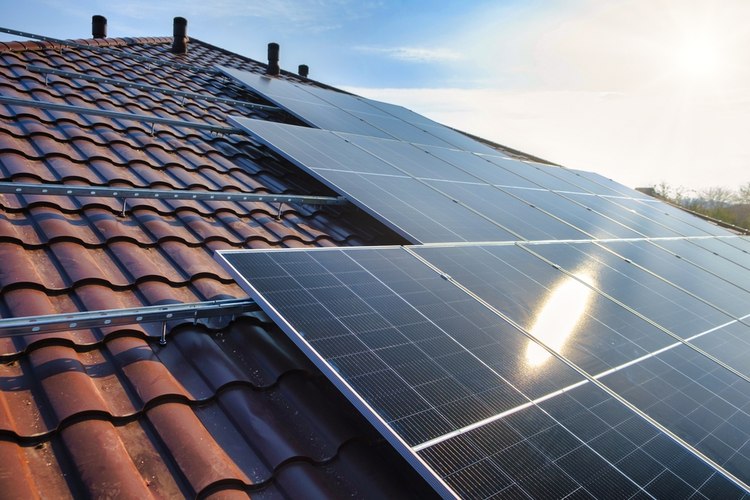Solar Windows: Affordable Energy Savings for Your Home
Solar windows represent one of the most innovative advancements in renewable energy technology for residential applications. These dual-purpose installations serve as traditional windows while simultaneously generating electricity from sunlight. As energy costs continue to rise and environmental concerns grow, solar windows offer homeowners a practical solution that combines functionality with sustainability. Not only do they provide natural light and views like conventional windows, but they also harness solar energy to reduce electricity bills and decrease your home's carbon footprint.

How Do Solar Windows Generate Electricity?
Solar windows utilize photovoltaic technology embedded within the glass to convert sunlight into usable electricity. Unlike traditional solar panels mounted on rooftops, solar windows integrate the energy-capturing capability directly into the window itself. Most designs use either thin-film solar technology or transparent solar cells that allow visible light to pass through while capturing ultraviolet and infrared light for energy generation. The electricity generated flows through nearly invisible conductive layers to connection points that tie into your home’s electrical system. This technology works even on cloudy days, though with reduced efficiency compared to direct sunlight exposure.
What Makes Solar Windows Different From Traditional Solar Panels?
While traditional solar panels and solar windows both generate electricity from sunlight, they differ significantly in application and efficiency. Conventional solar panels typically convert 15-22% of sunlight into electricity, while current solar window technology averages 5-12% efficiency. However, solar windows offer distinct advantages that offset this efficiency gap. They require no additional space since they replace existing windows, maintain aesthetic appeal without altering your home’s appearance, and provide value through both energy generation and traditional window functions. Additionally, solar windows can be installed on sides of buildings where conventional panels wouldn’t be practical, potentially increasing total energy capture across the entire home.
How Solar Windows Help Lower Your Energy Bills
Solar windows contribute to energy savings through multiple mechanisms. Primarily, they generate electricity that offsets what you would otherwise purchase from your utility provider. Depending on your local regulations, excess energy may be sold back to the grid through net metering programs, further reducing bills. Modern solar window designs also incorporate advanced insulation properties that prevent heat transfer better than standard windows, reducing heating and cooling costs. In warm climates, some solar windows can selectively block heat-producing infrared light while still generating electricity from it, decreasing air conditioning expenses during summer months.
The Benefits of Installing Solar Windows in Your Home
Beyond energy production, solar windows offer numerous advantages for homeowners. They significantly reduce ultraviolet light exposure in your home, protecting furniture and flooring from fading and damage. Most solar window installations increase property values, with studies showing renewable energy features delivering strong returns on investment at resale. The improved insulation qualities of solar windows also contribute to greater indoor comfort by eliminating cold or hot spots near windows. Additionally, many jurisdictions offer tax incentives, rebates, or grants for renewable energy improvements, making solar windows financially attractive beyond their direct energy savings.
Understanding the Real Costs and Return on Investment
The initial investment for solar windows exceeds that of standard windows, with current market prices ranging from $50-$150 per square foot installed, depending on technology type and energy production capacity. For comparison, premium non-solar windows typically cost $15-$40 per square foot installed. However, this price differential must be evaluated against long-term savings and incentives.
| Solar Window Type | Average Cost Per Square Foot | Estimated Energy Production | Typical ROI Timeline |
|---|---|---|---|
| Thin-film PV Glass | $75-100 | 5-8 watts/sq ft | 8-12 years |
| Quantum Dot Solar | $100-150 | 8-12 watts/sq ft | 7-10 years |
| Perovskite Solar Glass | $80-120 | 7-11 watts/sq ft | 7-11 years |
| Standard Double-Pane (non-solar) | $15-40 | 0 watts/sq ft | N/A |
Prices, rates, or cost estimates mentioned in this article are based on the latest available information but may change over time. Independent research is advised before making financial decisions.
Most homeowners can expect to recoup their investment through energy savings within 7-12 years, after which the windows continue producing free electricity for their remaining lifespan, typically 20+ years. Federal tax credits currently cover 30% of solar improvement costs, while many states offer additional incentives that can reduce payback periods by 2-3 years.
Environmental Impact and Sustainability Benefits of Solar Windows
Solar windows significantly reduce a home’s environmental footprint by decreasing reliance on fossil fuel-generated electricity. For a typical 2,500-square-foot home, solar windows can prevent approximately 2-4 tons of carbon dioxide emissions annually—equivalent to planting 40-80 trees each year. The manufacturing processes for solar windows have become increasingly sustainable, with many manufacturers implementing recycling programs for end-of-life products. Unlike traditional solar panels, which may require dedicated land or roof space, solar windows utilize existing structural elements, minimizing their physical footprint while maximizing energy capture potential. This dual-purpose functionality represents an efficient use of resources that aligns with sustainable building practices and green living principles.
Making the Decision: Are Solar Windows Right for Your Home?
Determining whether solar windows are appropriate for your home requires evaluating several factors. Homes with significant window square footage facing south, east, or west (in the Northern Hemisphere) will benefit most from solar window installation. Your local climate affects potential energy production—regions with more sunny days annually will generate greater returns. Building restrictions, homeowners association rules, and local building codes may impact installation feasibility. Comparing your current energy costs against projected savings helps establish a personalized return-on-investment timeline. For maximum benefit, consider installing solar windows during planned window replacements or new construction, when the incremental cost difference is smaller than retrofitting existing windows. Many manufacturers offer energy production calculators that provide customized estimates based on your specific location and window configuration.




